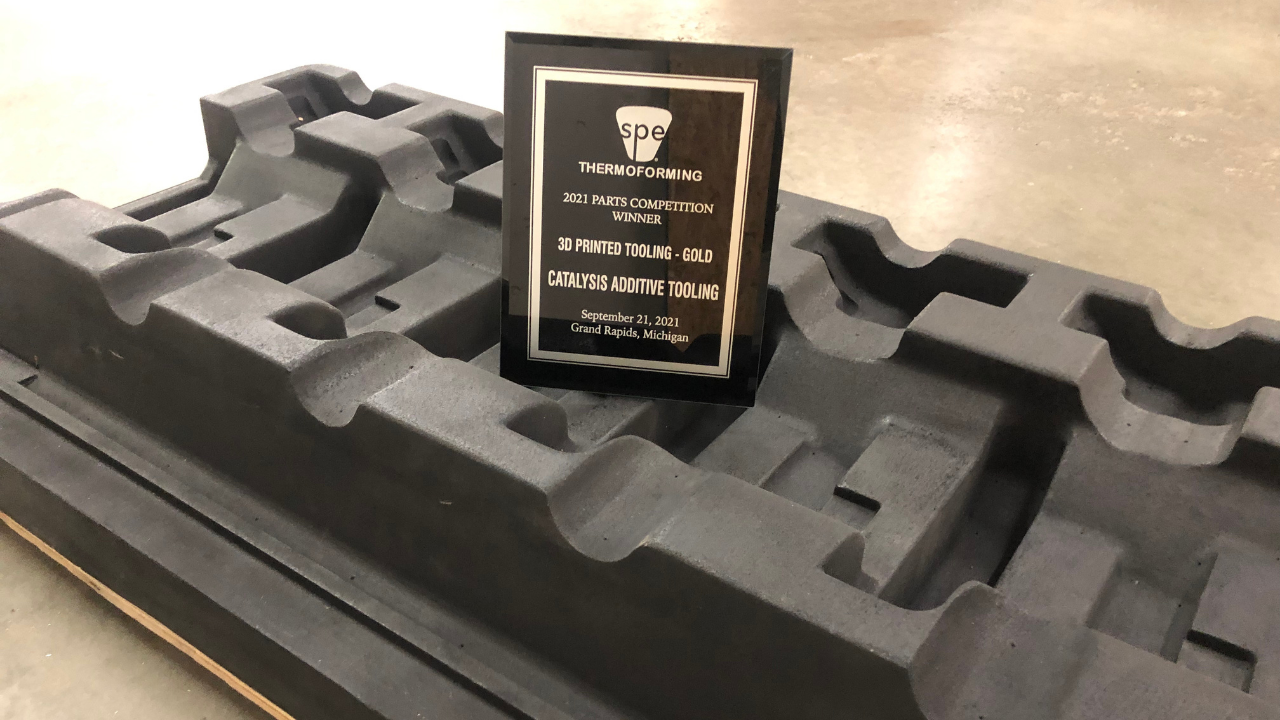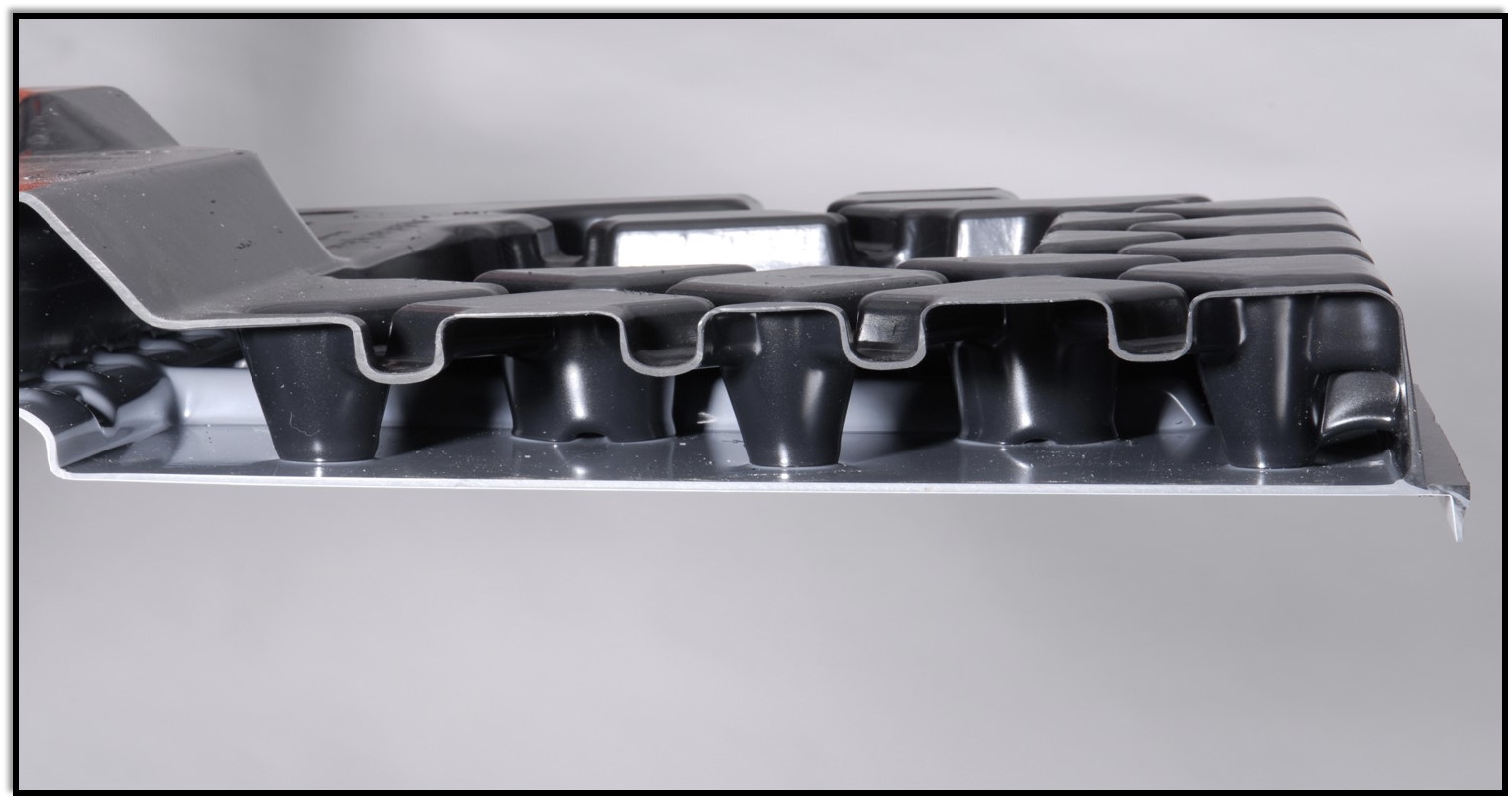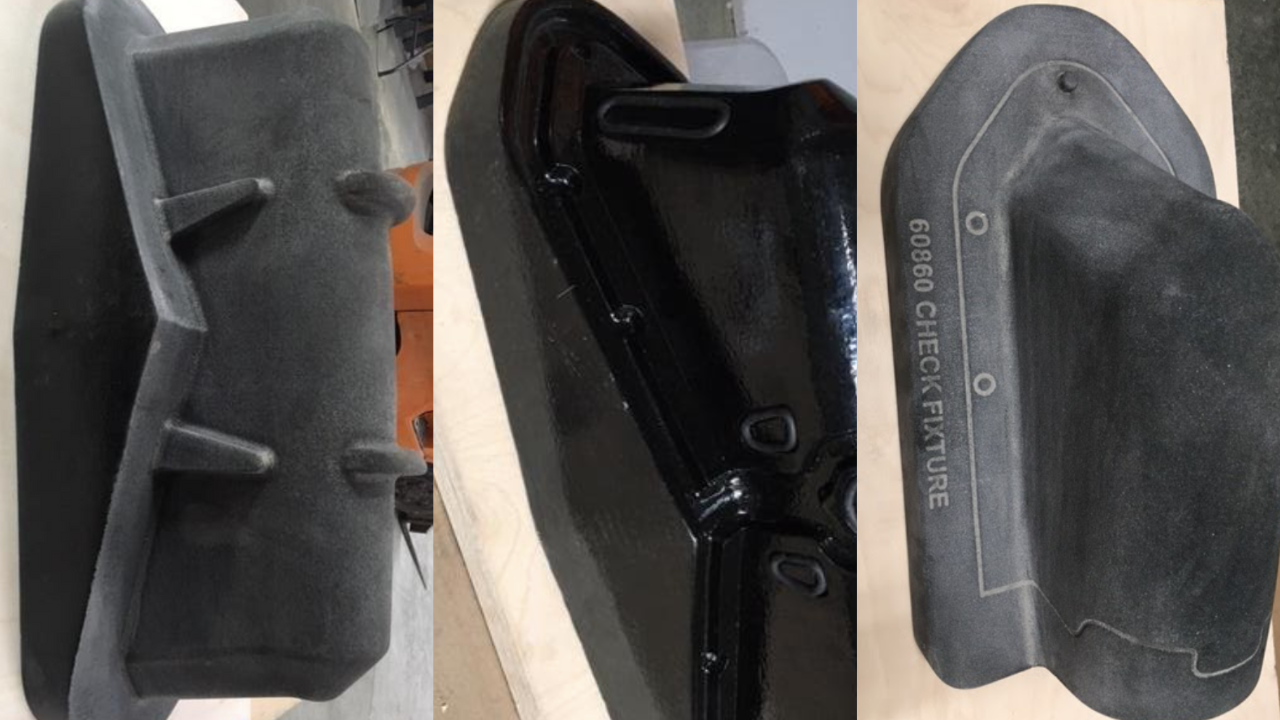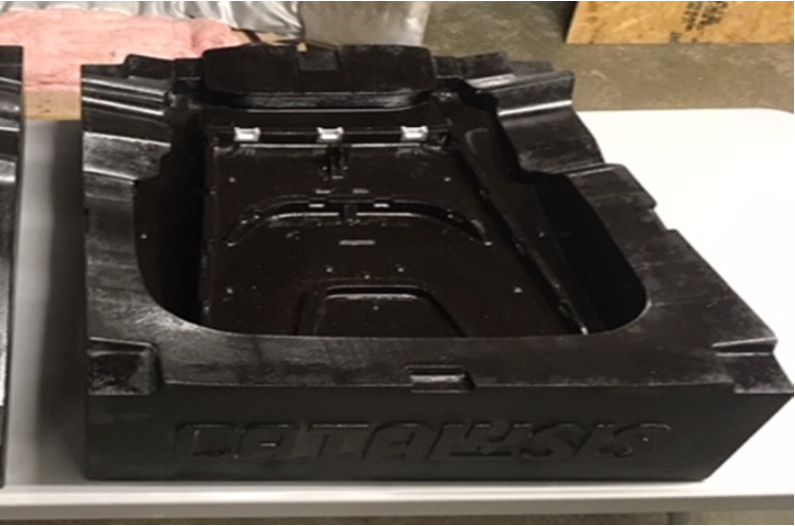
Vacuum Forming Tooling
The vacuum forming process involves heating a plastic sheet until it is soft and stretched onto a single surface mold. Where vacuum is applied to form the plastic over the mold surface to create the desired part. Click the link below to learn more about our 3D printed vacuum forming tooling and how we can save you cost & time on your tooling needs.

Twin Sheet Tooling
Twin sheet thermoforming is the process of vacuum forming 2 sheets of plastic together simultaneously. The process involves the use of two molds. Once formed, the top and bottom molds are brought together quickly, so as not to lose surface temperature. Click the link below to learn more about our 3D printed twin sheet tooling and how we can save you cost & time on your tooling needs.

Drape Forming Tooling
Drape forming is a process where a plastic sheet is heated then formed over a tool to make a part without the use of a vacuum. Our process allows us to get the tools printed, processed and to our customers as quickly as possible. Click the link below to learn more about our 3D printed drape forming tooling and how we can save you cost & time on your tooling needs.

Fixturing
A variety of fixtures can be made for CNC trimming, assembly, and part check purposes. The fixtures can accept and have rubber gaskets installed. In addition, the fixtures can be mounted to a box or mounting plate based on the customers needs. All fixtures use the same 3D printing technology, have the same design in order to save cost & time and are delivered together. Since all of the tools are made at the same time, this allows for an easier, more efficient time saving streamline process. Click the link below to learn more about our 3D printed fixturing options and how we can save you cost & time to meet project deadlines.

Foam Part Manufacturing Tooling
When it comes to foam part manufacturing tooling, we can either provide one tool for one part, or all tools needed for the entire vehicle in a manufacturing time of 3 weeks for prototype/low volume parts. Our 3D printed tooling technology enables tool designs that are not possible with traditional CNC manufacturing and has consistent thermal profiles by using integral copper water lines so each tool has the same thermal mass (similar shell thickness). Our 3D printed foam part manufacturing has a glossy tool surface finish, 85D scale hardness, strength required for 10-15 psi of foaming process, has a fully isotropic print structure and there is no delamination of the tool, meaning the tool will not separate (plastic tools will eventually separate). Click the link below to learn more about our 3D printed foam part manufacturing tooling and how we can save you cost & time on your tooling needs.
